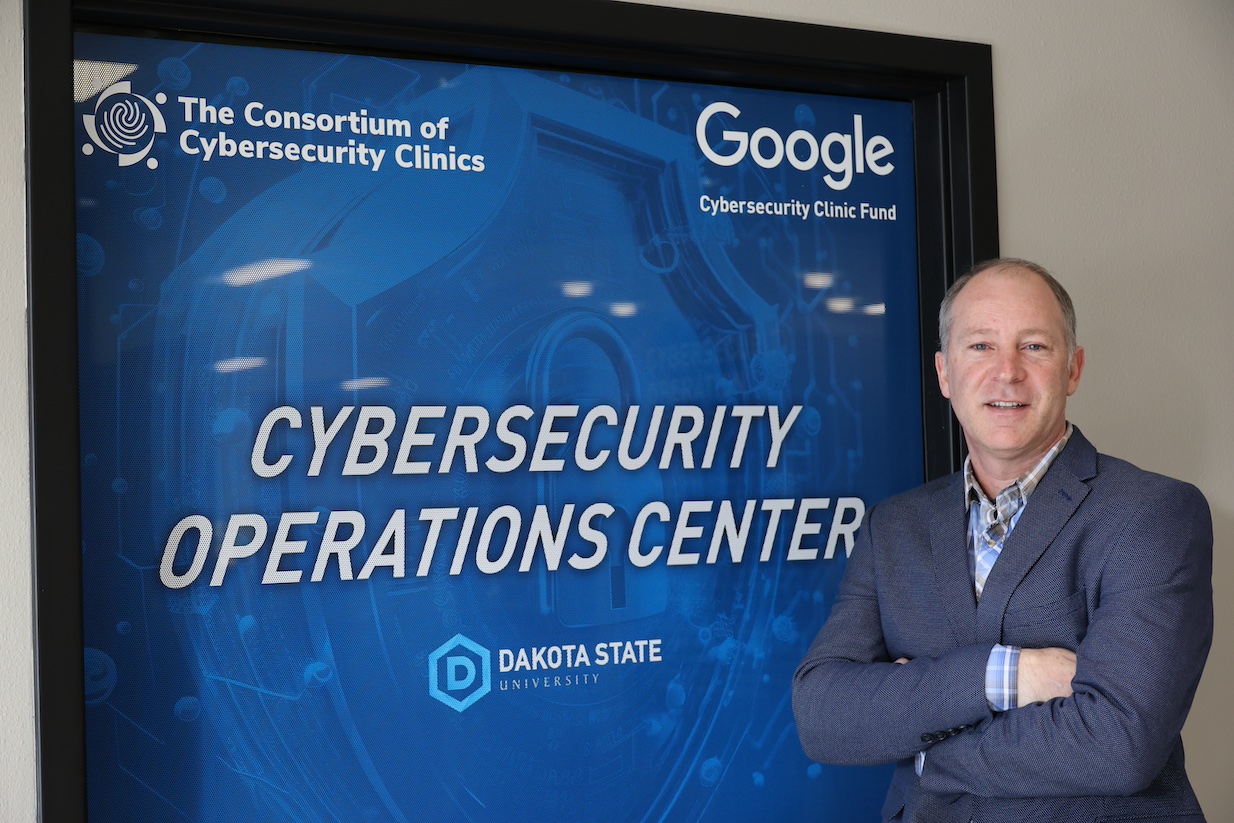Every business and organization needs to protect against cyberattacks.
At Dakota State University, that first tier of defense comes from the student body through its Cybersecurity Operations Center, or cSOC.
Shawn Jaacks started as DSU’s chief information officer in 2022, bringing experience from the transportation and banking industries and a master’s degree in cyber defense from Dakota State. He knew that he needed to find ways to address the threat landscape and security needs of a university.
He began exploring the idea of utilizing students to provide cybersecurity at DSU through a cSOC. Other institutions have been moving in the same direction, including Texas A&M, Louisiana State Unviersity and Indiana University. With access to DSU’s pool of intelligent, future cybersecurity professionals, he knew Dakota State could create an efficient, affordable center, one that would benefit not only the university by reducing the threat exposure to bad actors but also would be good for students and the industry.
“This opportunity helps students take the theoretical knowledge they gain in class and utilize that in a working environment, so they gain work experience. This way, we are investing in developing experienced cybersecurity professionals.”
Jaacks has seen data demonstrating that students who work in a cSOC can average about 30 percent more in income when they graduate because they are more productive at providing services.
“They’re workforce-ready,” he added.
With Board of Regents’ approval, Dakota State established a paid internship program in March 2024. Almost a year later, the program is going very well, Jaacks said. More than a dozen students currently work in the cSOC, along with one full-time staff supervisor.
“Our students are so talented and so eager, and have diverse technology backgrounds and different perspectives, so they can contribute to managing data, parsing it out and understanding existing threats,” he said.
“These students live for cybersecurity. It’s just who they are.”
There is an initial training curriculum to keep all cSOC services defined and processes repeatable and consistent, but the learning curve is short, so the students can be productive soon after they begin. “They come here and hit the ground running,” Jaacks said.
Based on their talent, exposure and background, students are assigned different roles at the cSOC. Students may do log analysis or look at threat intelligence, threat hunting, security awareness training, platform management, e-discovery or incident response and determine what is actionable or needs to be passed on to the cSOC supervisor or ITS staff.
“We match their skills with appropriate jobs and watch them grow from there.”
cSOC students can major in any program and be at any stage of their college career. One particularly outstanding student was only a freshman, Jaacks noted, but was able to establish a process to remove unnecessary information packets to better see pertinent data. “That made the tool set so much more efficient and effective.”
Because of Dakota State’s reputation as a technology leader, the institution is a target for bad actors, Jaacks said, so the students are busy. In this first year, “they have worked a lot of incident tickets and brought a huge benefit to the university.”
The cSOC program’s benefits to the students include teaching them time management skills to balance their coursework, extra-curricular activities and the 10 to 20 hours a week for the internship.
But it’s the technology experience that is most exciting for the students. “This is a great chance for me to learn in a hands-on setting and still get support in a structured system,” said Logan Pope, a sophomore cyber operations major from Aurora, Illinois.
He was one of the cSOC’s first hires and was instrumental in getting some of the groundwork completed. Now, his main job is triage. “I go through tickets and alerts, and see if they’re malicious.” If they are, he sends them on to a supervisor.
Many of the tasks Pope deals with are similar to what he learns in his classes. When something new or out of the ordinary comes up, he appreciates that he can ask others for information or advice and see how they would approach the problem. “It’s a great learning experience.”
The cSOC student employees are also great teachers.
“The students are so eager and so innovative with everything technology that they often help educate the full-time staff in new techniques and different perspectives,” Jaacks said.
Looking ahead to the future of the cSOC, Jaacks said they are interested in adding more tool sets and making some processes more autonomous. Many of the applications already used are home-grown and developed by cSOC students. Another goal is to become more project-focused, having some of the students work on research projects outside of the formal scope of services.




